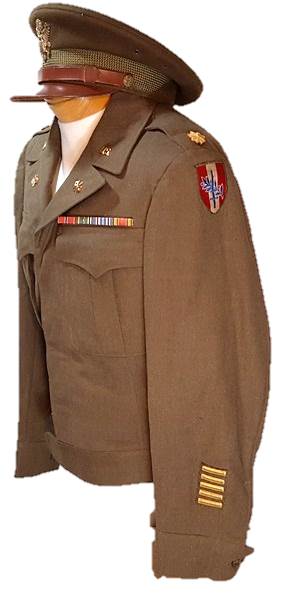
Below are a few very special items from the author's collection. While most items have lost their owners' identities over the passage of time, these are identified items or groups from veterans who served. By placing a name and a history with them, we can truly honor these veterans, their sacrifices, and their legacy.

This veteran was from Janesville, WI. He started the war as an enlisted man and then trained as a tank officer. He commanded a Sherman tank as a company commander under the famous General Creighton Abram and was awarded the Silver Star. He served in the 4th Armored Division and was wounded three times in France. These wounds included many shrapnel wounds to his back, legs, and face; he also broke his hands on a falling tank hatch. He spent over 100 days in the hospital but survived the war. At the time of his separation from the Army after the war he held the rank of Major.
At right is the officer'sdress jacket from this veteran, showing rank insignia on the shoulders and the 4th Armored Division patch on the shoulder. His effects also included garrison covers, foot lockers, and his tanker coveralls.


This Minnesota veteran served in the 4th Marine Division. As a young officer, he was selected as an Air Liaison Officer and assigned to the 1st Joint Assault Signal Company (JASCO). JASCOs were mixed Army, Navy, and Marine groups and the first onto an enemy island. Their job was to radio in coordinates to offshore ships for where they should bombard and how they should land their troops. Tragically, this brave Marine was killed in action on February 23, 1945 on Iwo Jima, just four days after the invasion and in a battle that would rage until mid March. Nearly 7,000 Marines were killed in what would be one of the bloodiest battles of the war. His remains were buried at sea from the USS Rebel.
At left is a photo of him, his officer's commissioning documents, and a Purple Heart medal that accompanied the group. The medal is not inscribed.

While in college this veteran enlisted as a Private in the Air Corps in 1942 in New York. He was assigned to the 92nd Bomb Squadron, 325th Bomb Group of the 8th Air Force and stationed in England. He flew on B-17 bombers as the flight engineer and top gunner, completing over thirty combat missions over Europe, including missions over France, Germany, and Poland. He crashed once but was fortunate in that his entire crew walked away unscathed. He finished his tour of duty in September, 1944 and was rotated home.
He earned the Distinguished Flying Cross and three Air Medals, among other awards. After the war he served with the New York Port Authority. His heroism did not end with World War II. On May 13, 1949 the infamous Holland Tunnel Fire occurred and a handful of heroic people pulled commuters to safety—this vet was among the responding crew. For his actions he was awarded a medal "For Devotion Beyond the Call of Duty" at the Holland Tunnel on that day.
At right are some of his medals, his dog tags, and some insignia. He also engraved and brought home a piece of his crashed B-17, which safely crash landed in England after being shot up one a bombing raid over Germany. He also kept the bomb arming pin at right, which were removed to arm bombs prior to dropping them.
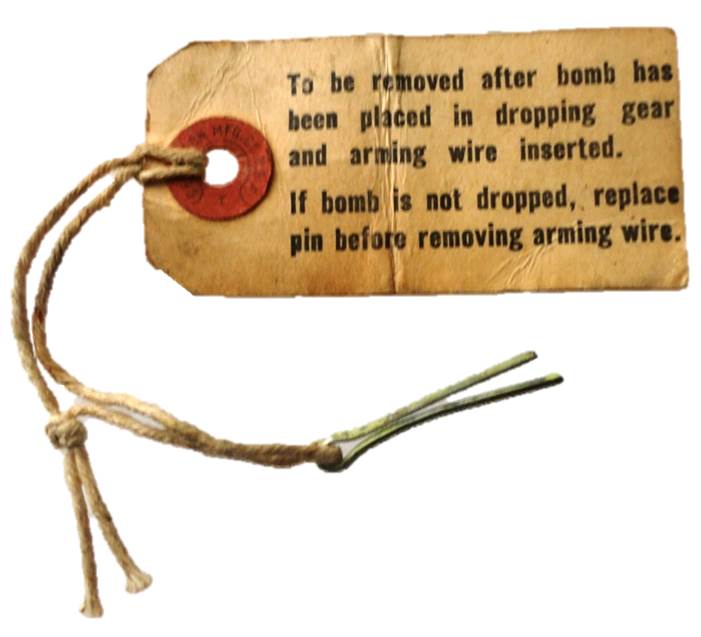
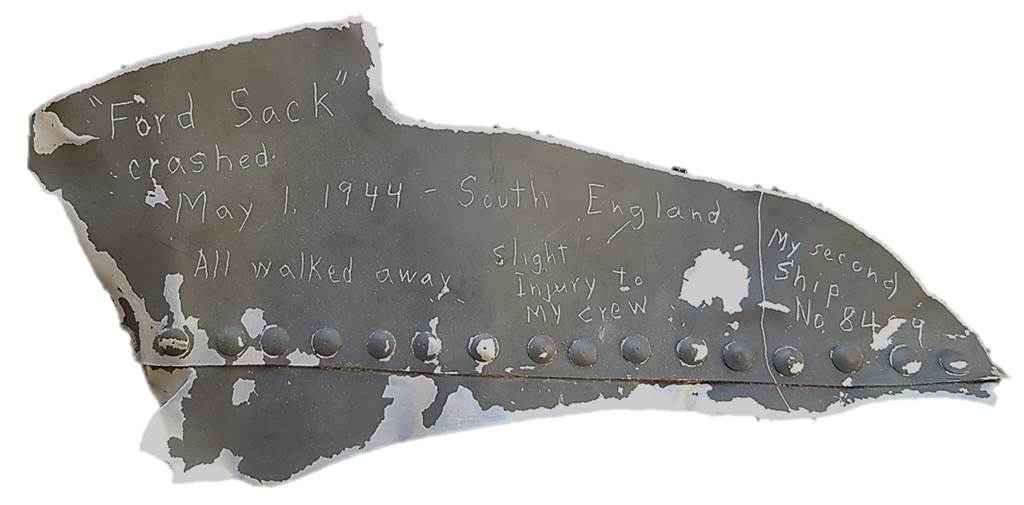
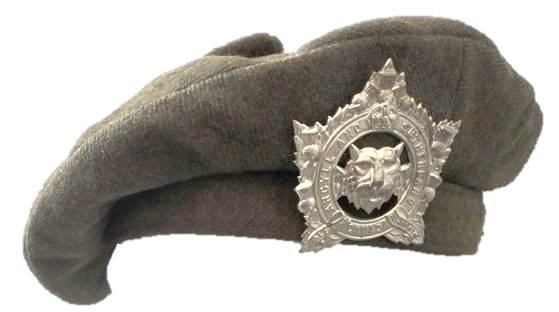
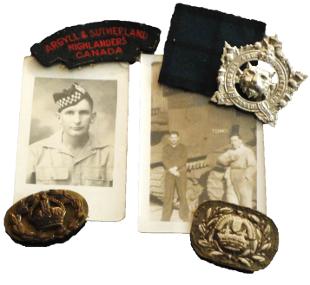

This Canadian soldier was from Ontario, Canada. He enlisted in the city of Hamilton in the Argyll and Sutherland Highlanders of Canada (Princess Louise's). He trained in Hamilton and spent the first part of the war training in Nanaimo, British Columbia and then guarding the Welland Canal in Ontario that connects Lake Ontario and Lake Erie. He was then stationed in Jamaica in 1942 before transferring to England. As part of the 4th Canadian Armoured Division he operated US-made M7 Priest tanks and was sent to France in July 1944. After a year of fighting across Europe, he was sent back to Canada and discharged in 1946.
This grouping includes his insignia, photograph, a tartan square, and his wool service cap. The crest is for the Argyll and Sutherland Highlanders of Canada.

This soldier was born and raised in Chicago. While enrolled at Crane Tech High School he took aviation training and applied at age 17 to be a Naval Aviator. He was denied acceptance in December 1943 due to the Navy's quota being met; he was drafted on June 5, 1944 into the Army, just one day before the D-Day invasion. At age 19 he completed training at Camp Robinson, Arkansas, and spent Christmas 1944 on leave with his parents in Chicago. He departed for Le Harve, France on January 8, 1945 and arrived on January 14. He initially assigned to a rifle platoon in the 3rd Infantry Division for several weeks and then reassigned to a mortar squad for a couple of days. He was then assigned to a light machine gun team at Colmar, France. Later known as the "Colmar Pocket," this was the site of a fierce battle in the winter cold to establish an allied foothold in the area.
It was near Colmar on the night of February 6, 1945, that a this soldier sought to silence a German defensive road block with his machine gun crew. During the skirmish a German mortar round landed next to him and grievously wounded his right leg. He was rushed to the rear on a Jeep "in twenty minutes" and immediately returned to the States on a hospital ship named Thistle. He returned through Charleston, SC to Stark General Hospital on March 14, 1945. His right leg was amputated and, after a lengthy recuperation, he was honorably discharged as a Private First Class from McCloskey General Hospital in Temple, TX on February 5, 1946.
At right is part of his medal and insignia collection, including his Purple Heart, Combat Infantry Badge, and Bronze Star. He was later awarded the Croix de Guerre from France for his service in the country.
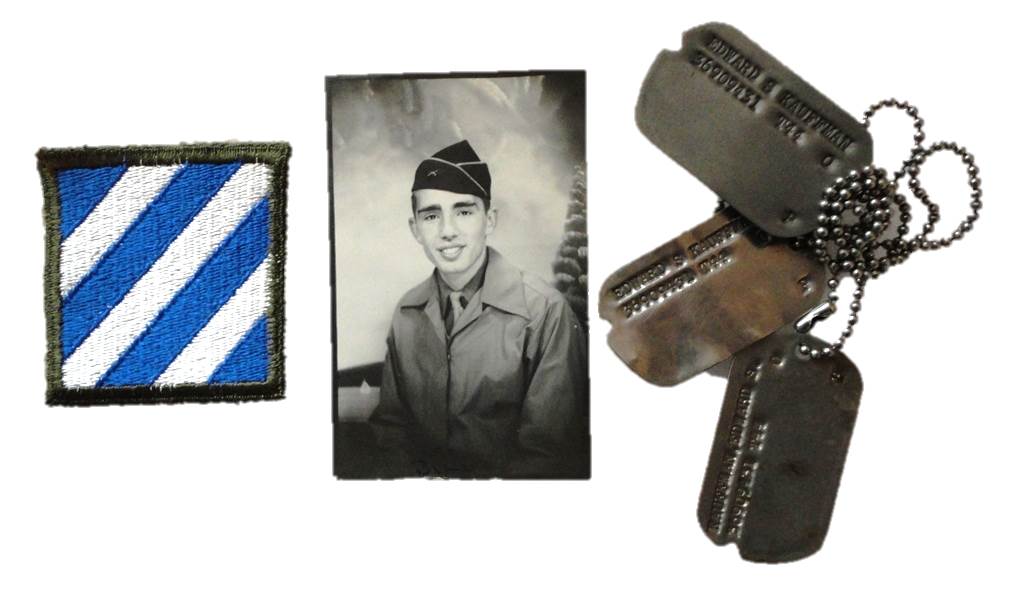
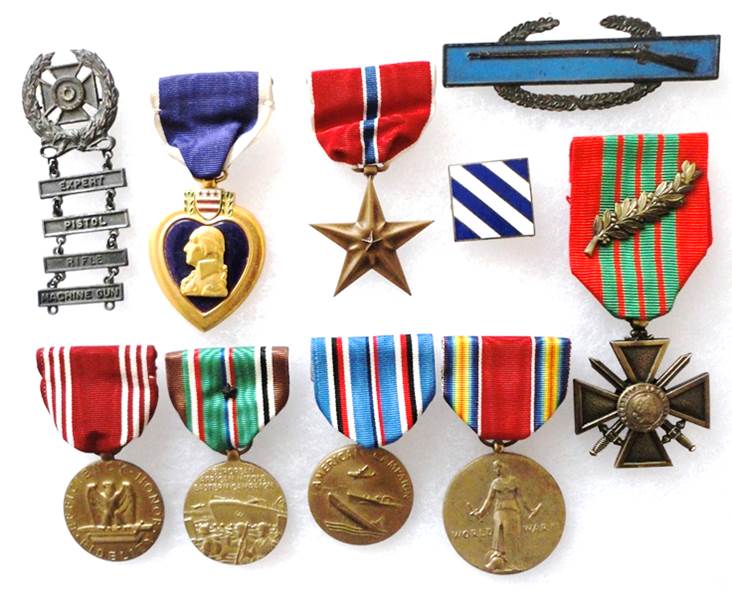
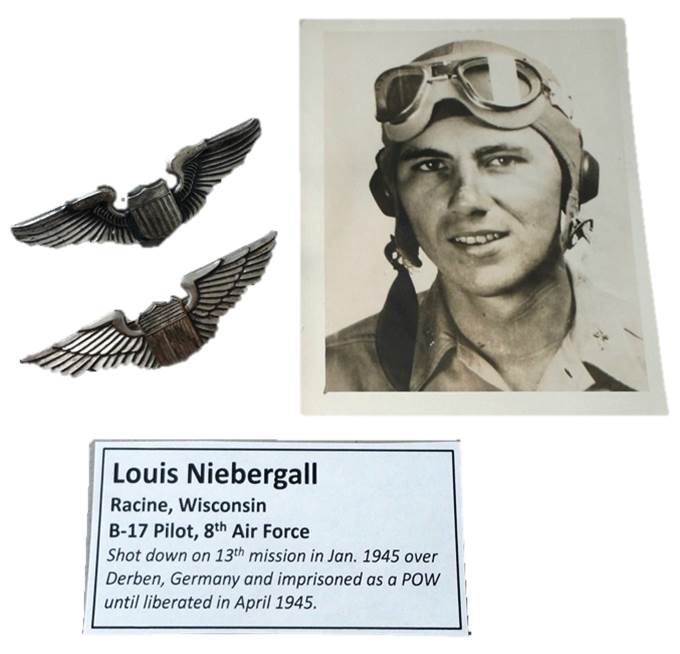
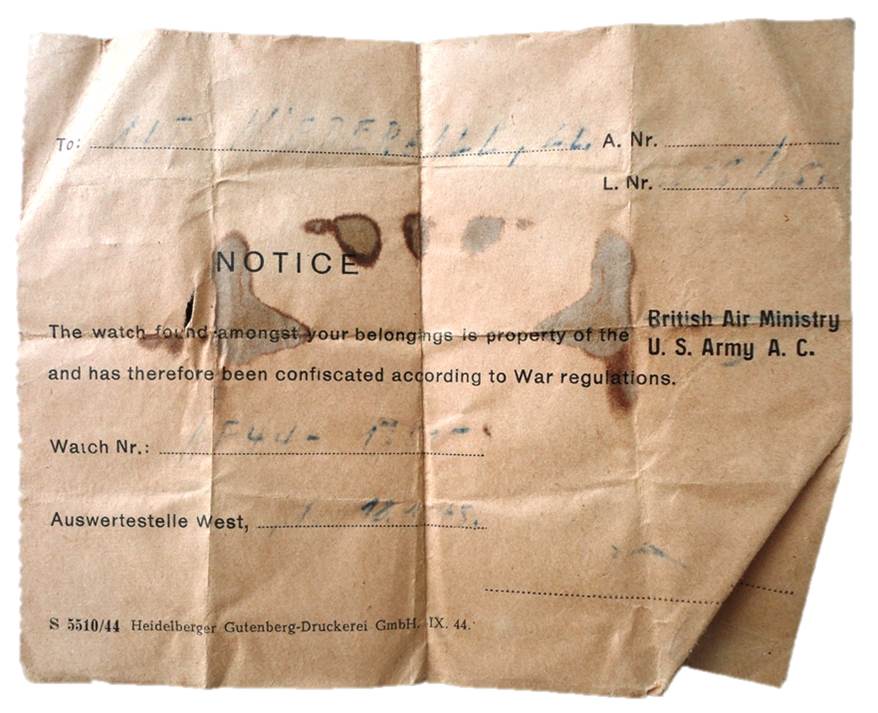

This veteran was from Racine, WI and served as a B-17 pilot with the 390th Bomb Group, 8th Air Force, in WWII. He enlisted in the Air Corps on Armistice Day, 1942, at age 19. His previous occupation is listed as a surface grinder. He went to Pilot School at George Field in Lawrenceville, Illinois. He flew 13 missions in the B-17G "Star Duster" between 11/1944 and 1/1945--all of them over Germany.
The "Star Duster" was shot down on 14 January 1945 and one of the crew was killed on board, while two others were later listed as Killed in Action. Our veteran and the remainder of his crew bailed out safely and were captured on the ground. He was imprisoned at Stalag VII A Moosburg in Southern Bavaria and liberated by the 14th Armored Division in April, 1945.
Among the amazing artifacts from this grouping are photos of this pilot, his wings, his cap, and a folded document that is the receipt given to him by the Germans when his watch was confiscated at the time he was taken prisoner.
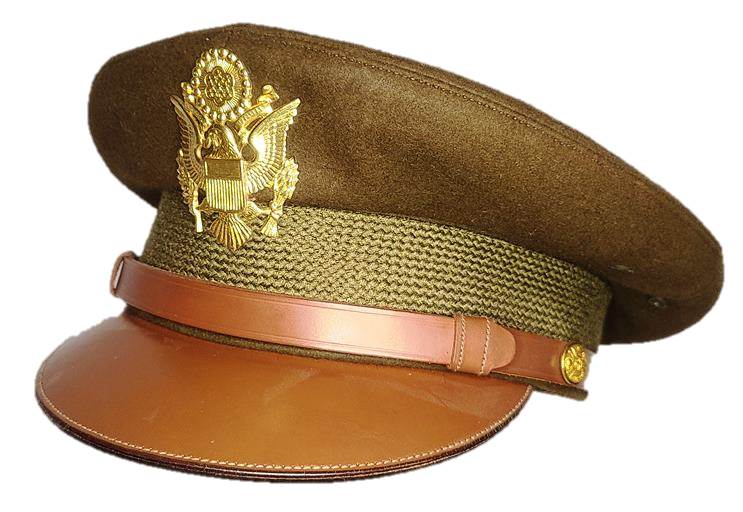

Enlisting in the Air Corps in 1942, this veteran served through 1945 in the China-Burma-India Theater with the 96th Fighter Control Squadron of the 10th Air Force. He trained on VHF radios and was first deployed to India, where he and other three-man teams set up radio beacons in the jungles to guide aircraft back to their airfields.
He was later transferred across the Himalayas and into the jungles of China, where he manned radio posts. His final posting was a transfer to Burma in summer 1945, and when the war ended he returned to the United States.
At right is the veteran's jacket. Insignia include bullion CBI patch and Chinese Air Task Force (looks like a reversed 14th AF) patch with Airborne engineers tab. The author had the honor to interview this veteran and learn his story.
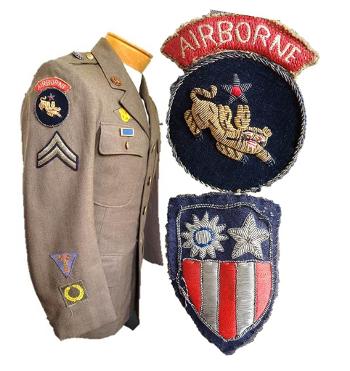
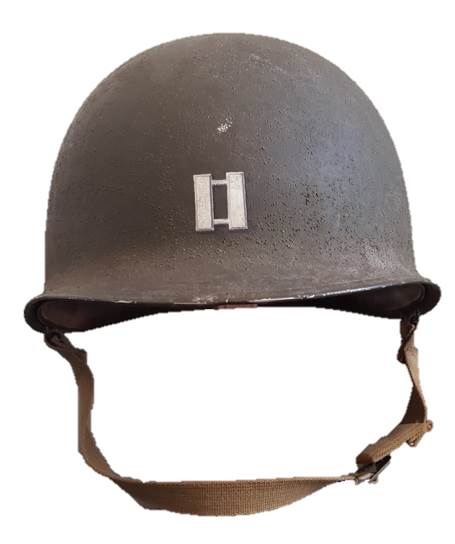
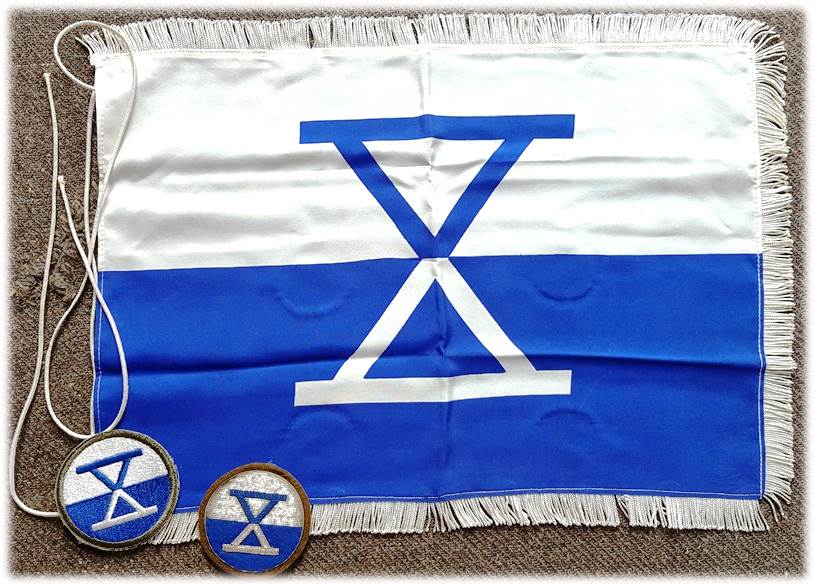

This veteran commissioned in 1943 and went on to serve as a captain in the 9th Infantry Division in the ETO through the end of World War II. After the war he continued his service in the Korean Conflict, becoming a lieutenant colonel in the Quartermaster Corps. He served with X Corps in Korea in the 1950s and then as an officer in COMZ in France and Germany into the 1960s. After years of working with the Department of Defense and Pentagon, he retired as a full colonel in 1967 and went on to work with NASA in the Apollo programs before a career in the education field.
At left is the veteran's helmet with captain bars from WWII, and a silk flag and insignia he brought back from Korea.

A prewar college ROTC graduate, this Chicago veteran was called to service with the start of WWII. He trained in Florida with the 51st Signal Battalion and was deployed to French Morocco in 1943 as part of the newly-formed 5th Army. In North Africa he operated and repaired radios, and participated in the landing at Salerno, Italy in September 1943. He was then assigned as a communications officer to the staff of General Mark Clark, with whom he developed a lasting friendship.
During the Anzio landing he was accompanying General Clark on a PT boat offshore when they were fired upon by a friendly destroyer and nearly sunk before the mistake was realized. He was awarded the Bronze Star by Clark for his valor under fire. He participated in the Battle of Monte Cassino, the liberation of Rome, and the remainder of the Italian Campaign under Clark in the 15th Army Group. With the war's end, he continued to serve under Clark as part of the US Forces in Austria.
At right is one of this veteran's uniforms and cap.
